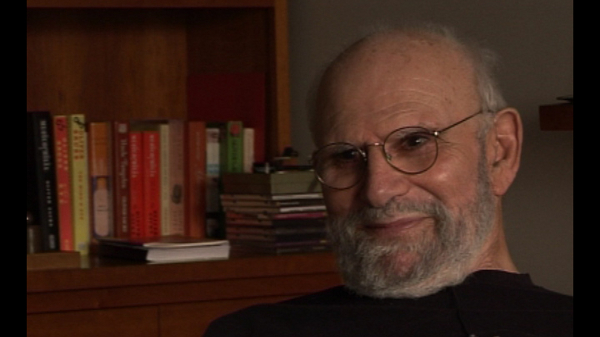NEXT STORY

Photography in neurology
RELATED STORIES

NEXT STORY

Photography in neurology
RELATED STORIES


|
Views | Duration | |
|---|---|---|---|
| 101. Difficulty with reading poetry | 1 | 434 | 01:18 |
| 102. Love of photography as a boy | 340 | 01:23 | |
| 103. Photography at UCLA | 313 | 02:19 | |
| 104. Photography in neurology | 312 | 01:19 | |
| 105. Photography, migraines and neurology | 317 | 01:13 | |
| 106. Did I really have that bad a time in Oxford and California? | 363 | 01:32 | |
| 107. My US motorbike travel journal | 358 | 00:23 | |
| 108. My travel journals and experiences | 384 | 02:00 | |
| 109. Seeing the Air Force Academy in Colorado Springs | 328 | 00:42 | |
| 110. Writing and weightlifting in California | 377 | 01:03 |


The interest in photography re-blossomed when I was in Southern California at UCLA, partly because of the beauty and wonder of everything, whether it was natural scenery or... or the scene at the beach, the scene on Muscle Beach and Venice Beach, which was quite exotic in the early '60s. But also I had the use of a professional dark room. I got myself a larger camera, a 4x5 view camera, I love dealing with a large negative and... and the magic of seeing the image gradually appear as one printed it and tilted the tray of developer to and fro.
I travelled a lot in those days. I had a motorbike and I thought nothing of going to the Grand Canyon overnight. I would go after work on Friday. I would travel through the night; it was 900 miles. I... I loved my BMW bike and I would hold it at close to 100 miles an hour. Especially I loved it under a full moon and I’d get to the Grand Canyon by morning. I had a lot of geographic pictures of scenery, I had a macro lens for plant photography and I had the opposite of that, I had what is good for an impudent or shy or deceitful photographer of people. I had a 500mm lens, which meant I could do portraits of people when I was 300 yards away. And this way you could get intimate and reach out optically without being close. I... when I left UCLA I put all my photographic work, including the negatives, in a large trunk which was due to be sent to me in New York. The trunk never appeared and so all I have... I have a few odd things which were not in the trunk, but... but all that disappeared.
Oliver Sacks (1933-2015) was born in England. Having obtained his medical degree at Oxford University, he moved to the USA. There he worked as a consultant neurologist at Beth Abraham Hospital where in 1966, he encountered a group of survivors of the global sleepy sickness of 1916-1927. Sacks treated these patients with the then-experimental drug L-Dopa producing astounding results which he described in his book Awakenings. Further cases of neurological disorders were described by Sacks with exceptional sympathy in another major book entitled The Man Who Mistook His Wife For A Hat which became an instant best seller on its publication in 1985. His other books drew on his rich experiences as a neurologist gleaned over almost five decades of professional practice. Sacks's work was recognized by prestigious institutions which awarded him numerous honours and prizes. These included the Lewis Thomas Prize given by Rockefeller University, which recognizes the scientist as poet. He was an honorary fellow of both the American Academy of Arts and Letters and the American Academy of Arts and Sciences, and held honorary degrees from many universities, including Oxford, the Karolinska Institute, Georgetown, Bard, Gallaudet, Tufts, and the Catholic University of Peru.
Title: Photography at UCLA
Listeners: Kate Edgar
Kate Edgar, previously Managing Editor at the Summit Books division of Simon and Schuster, began working with Oliver Sacks in 1983. She has served as editor and researcher on all of his books, and has been closely involved with various films and adaptations based on his work. As friend, assistant, and collaborator, she has accompanied Dr Sacks on many adventures around the world, clinical and otherwise.
Tags: UCLA, Grand Canyon, California, Muscle Beach, Venice Beach
Duration: 2 minutes, 19 seconds
Date story recorded: September 2011
Date story went live: 02 October 2012